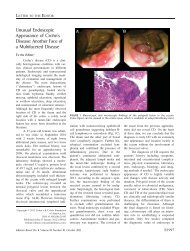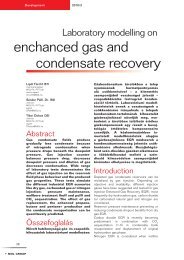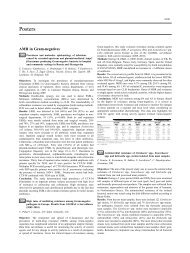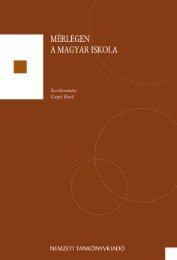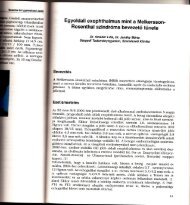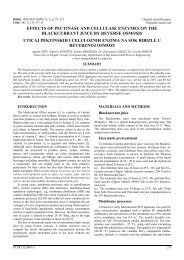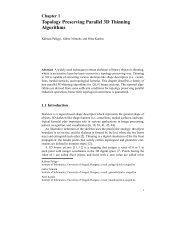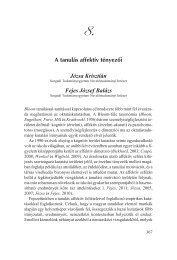View - ResearchGate
View - ResearchGate
View - ResearchGate
Create successful ePaper yourself
Turn your PDF publications into a flip-book with our unique Google optimized e-Paper software.
Introduction<br />
The incidence of fungal infections has been increasing since the 1980s. The increasing<br />
number of susceptible hosts (organ or bone marrow transplant patients) as well as the use of<br />
immunsuppressive agents and antimicrobial prophylactic strategies has probably contributed<br />
to the changing epidemiology of mycoses [1]. The volume of disseminated infections caused<br />
by filamentous fungi (moulds) is lower than that caused by yeasts [2]. Most infections caused<br />
by moulds originate from the environment by inhalation through the respiratory tract or<br />
contamination (e.g. postoperative wounds, heart valves, etc.) [3]. The most frequently isolated<br />
moulds are Aspergillus spp.: A. fumigatus is responsible for a large majority (85-90%) of the<br />
different clinical manifestations of several mould infections [2]. However, the importance of<br />
other moulds (Penicillium, Cladosporium and Scopulariopsis spp.) has also been increasing.<br />
Moulds are able to cause infections of the respiratory tract (e.g. pneumonia, allergic<br />
bronchopulmonary mycosis, aspergilloma, allergic fungal rhinosinusitis, etc.) and superficial,<br />
cutaneous, osseous or invasive mould infections [4–10].<br />
The in vitro susceptibility testing of filamentous fungi is becoming increasingly<br />
important because of the frequency and diversity of the infections they cause [11]. The<br />
standard method for determination of the MICs of filamentous fungi (the NCCLS broth<br />
microdilution method [12, 13]) and the Etest were compared in previous studies [2, 14, 15]. In<br />
the case of many moulds, good correlations have been demonstrated for amphotericin B and<br />
itraconazole, but the results depended on the species tested and the nutrient media used for<br />
susceptibility testing [2, 14].<br />
This report summarizes the antifungal susceptibility results on filamentous fungi<br />
isolated from clinical specimens and from the environment, obtained by the Etest method.<br />
3



